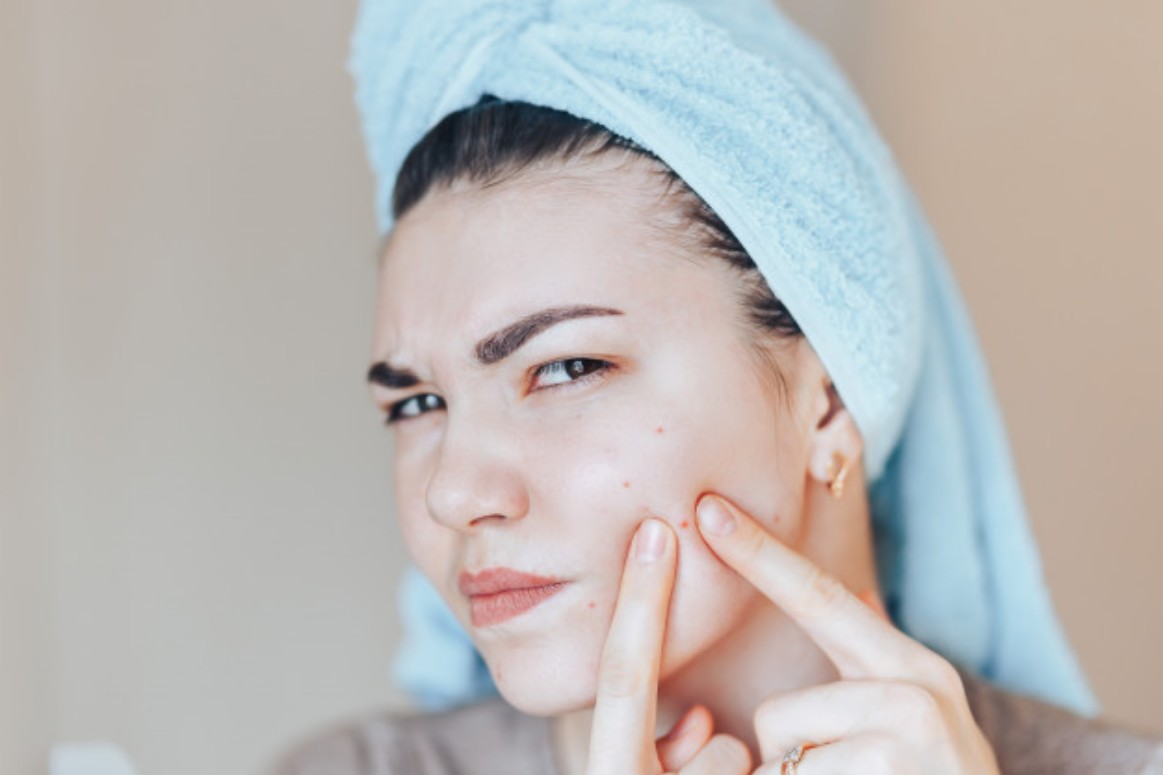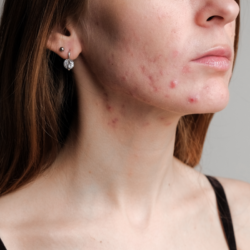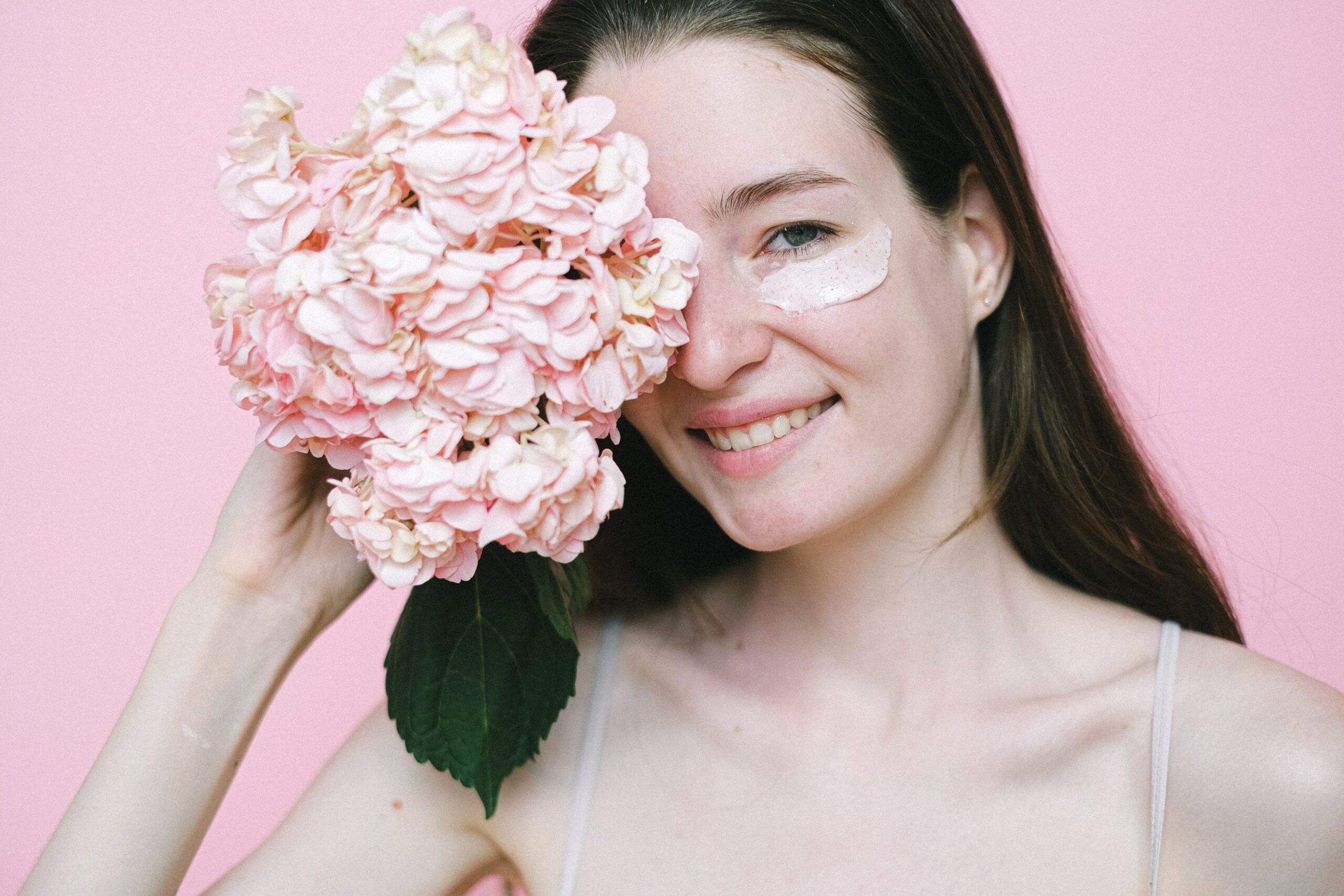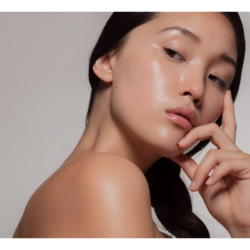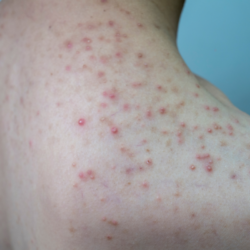During adolescence, acne affects around 80% of young people. It causes pimples on the face, neck, chest and back. This skin condition, which is certainly linked to puberty, leads most young people to consult a dermatologist. However, there is no single type of acne. Consequently, to choose the right local treatment for your type of acne, you need to clearly define and understand the type of lesions on your skin.
Understanding teenage acne
Before choosing a treatment for your teenager with acne, it’s important to understand the causes of the condition. Acne is caused by an overproduction of oil in the skin’s sebaceous glands, which clogs pores and leads to the formation of pimples. Hormones play an important role in the production of skin oil, which explains why acne is so common during puberty. Other factors that can contribute to teenage acne include poor diet, lack of hygiene, stress and family history.
Different types of pimples in teenage children
Acne is ultimately a skin disease that most often manifests itself on the face. It is characterised by the appearance of pimples (comedones, papules, pustules, nodules and cysts) developed at the expense of the pilosebaceous follicles. Teenage acne affects teenagers in particular, but can persist into young adulthood.
During the puberty period, the quality of young people’s skin changes under the effect of hormones that stimulate the sebaceous glands. Acne is also a disease of the pilosebaceous follicle, which consists of a hair with an attached sebaceous gland. Normally, sebum is a fluid liquid, but inacne it is thicker and the skin pores are clogged with dead cells
Acne pimples form in 4 stages:
- Hyperseborrhoea: the skin naturally secretes sebum through its pores. When secretion is increased, this is called hyperseborrhoea.
- Dysséborrhée: this is poor quality sebum. Its viscous texture suffocates the skin and leads to the appearance of blackheads
- Hyperkeratinisation: the surface layer of the skin is essentially made up of cells known as keratinocytes. Hyperkeratinisation consists of an increased proliferation of these cells, resulting in thickening of the skin. This is a physiological reaction of the skin to aggression (particularly UV rays).
- Inflammation: pores can become inflamed as a result of irritation and the proliferation of bacteria (Propionis acnes), triggering inflammation of the skin.
The various natural local pimple treatments for teenagers will target a different process depending on the type of acne to be treated.
Different types of teenage blemishes
Acne is a skin condition linked to inflammation of the pilosebaceous follicles.
However, there are 5 types of acne:
- Retention acne is characterised by the production of comedones, cysts, blackheads and whiteheads. This is generally how the condition starts.Excess sebum and closure of the pilar canal through which the sebum drains, creates sebum retention in the sebaceous gland, and gives rise to blackheads and whiteheads.
- Inflammatory acne is characterised by large, painful red pimples and cysts that can leave indented scars. Retention acne, with the development of the bacterium propionibacterium acnes, becomes inflammatory through microbial proliferation, resulting in red lesions.
- Mixed acne combines the two forms of retentional acne and inflammatory acne, with comedones and red pimples. This is the most common form of juvenile acne (affecting almost 60% of acne sufferers).
- Acne conglobata is a more serious form of acne, also known as back acne. It combines deep abscesses and oily sebaceous cysts on the back, face and nape of the neck. Acne conglobata, an aggravated form of acne, involves the appearance of pustules, papules (red pimples), comedones, nodules and cysts.
- Fulminant acne is a rare form in which a young acne sufferer (whether treated or not) presents with a high fever, widespread joint and muscle pain, and a sudden spread of lesions, which become highly inflammatory, ulcerated, crusted and painful. Progression is slow, and scars are generally very pronounced.
Treatment of acne in adolescents
Cleansing blemish-prone skin
Mild acne is first and foremost a problem of hygiene; if you exfoliate your skin sufficiently, it will regain its radiance. But the truth is much more complex. When it comes to caring for acne-prone skin, it’s all about maintaining the skin’s balance and choosing the right powerful active ingredients.
That’s why we recommend cleansing your skin morning and night, using a micellar solution or a purifying gel cleanser adapted to oily skin with a tendency to acne:
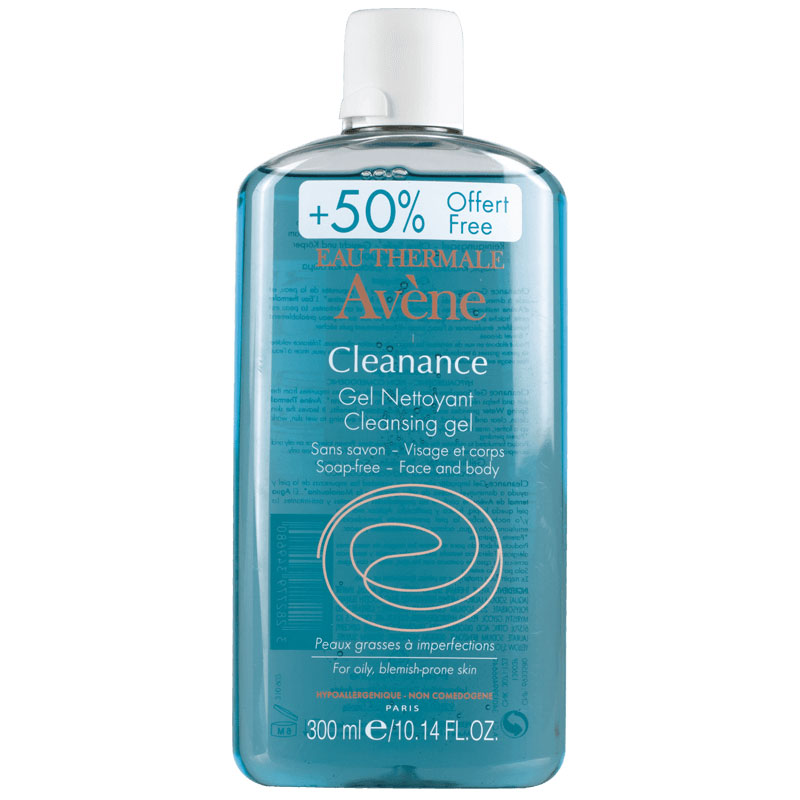 |
Avene Cleanance Cleansing Gel gently cleanses the skin every day. While preserving its pH and integrity, this officinal product has a soothing virtue. |
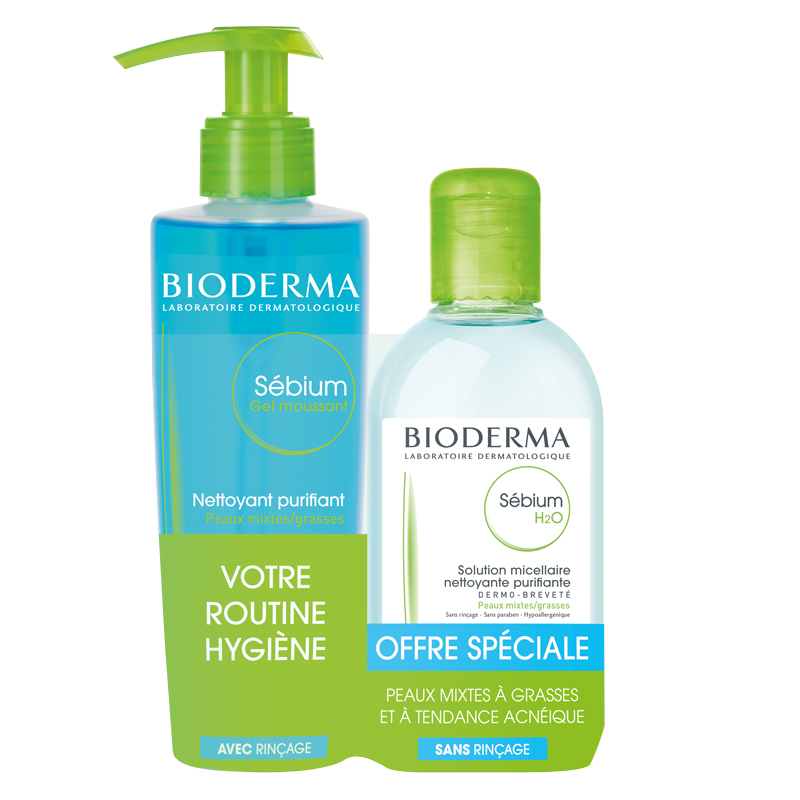 |
Bioderma Sebium Purifying Cleansing Gel with H2O Micellar Solution, specially designed for combination or oily skin with a tendency to acne, helps the skin to regulate the quality and quantity of its fatty acids, restoring sebum levels close to those of healthy skin and effectively preventing the appearance of pimples and blackheads. |
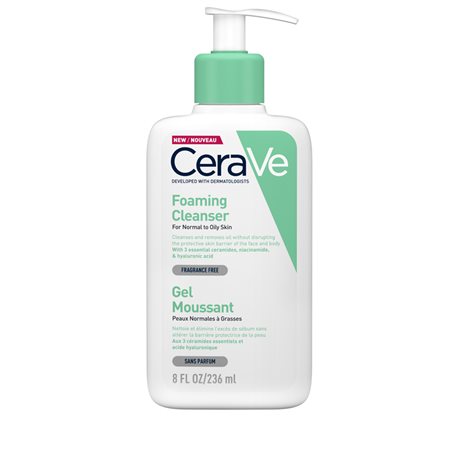 |
Cerave Foaming Gel for Acne-prone Skin gently removes dirt, excess sebum and make-up without disrupting the skin’s natural protective barrier. |
Skin hydration against acne
Moisturising oily skin with imperfections with a non-comedogenic skin care product encourages it to produce less sebum and therefore fewer pimples and blackheads.
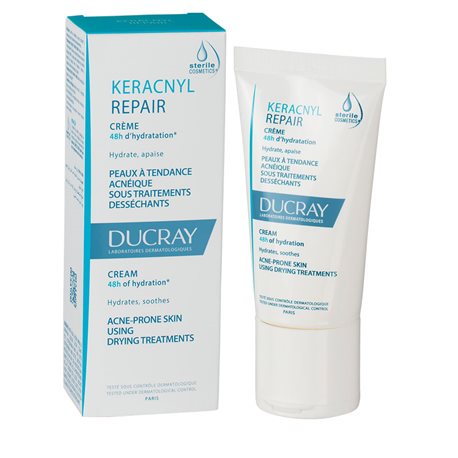 |
Keracnyl repair by Ducray is specially adapted for acne-prone skin that has been dried out by treatment |
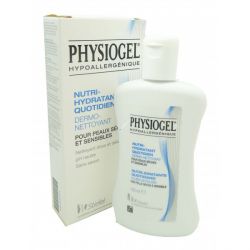 |
Aggression can also occur following the use of soaps, cleansing milks and more or less irritating dermatological treatments, particularly pimple treatments. Physiogel Cleansing Gel Extra-gentle fluid dermo-cleanser for reactive sensitive skin, skin weakened by dermatological treatments and skin intolerant to conventional soaps or cleansing milks. |
Skin treatment for pimples
Local treatment to eradicate pimples, reduce inflammation and avoid unsightly marks and scars.
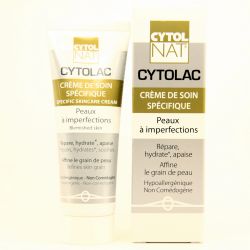 |
Cytolac Specific Care Cream is a hypoallergenic, non-comedogenic skin care product formulated to purify, soothe and moisturise blemished skin. Cytolac helps to reduce lesions such as microcysts, comedones, papules and pustules. |
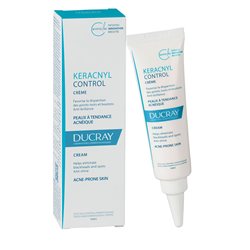 |
Keracnyl Ducray Control is a cream for oily, blemish-prone skin that helps pimples and blackheads to disappear. |
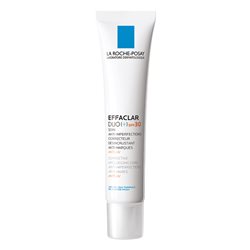 |
Effaclar Duo Crème La Roche-Posay 40ml is an anti-imperfection, corrective, cleansing, anti-blemish and anti-UV treatment for oily skin with imperfections. An anti-blemish and anti-UV cream specifically formulated to treat and protect oily, acne-prone skin. |
Antibiotic treatment for severe acne (conglobata and fulminant)
In the presence of severe or very severe acne, a drug from the retinoid family (isotretinoin) may also be prescribed. These are products derived from vitamin A. In the case of antibiotic acne medication, the first prescription is made exclusively by a dermatologist, and repeat prescriptions can be made by the GP.
Anti-acne kit for teenagers
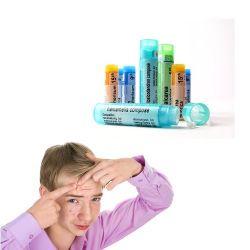 |
The Homeopathic Juvenile Acne Kit effectively and naturally treats skin disorders linked to acne during adolescence. Juvenile acne is very common and can be a real tragedy for teenagers. In the case of acne with comedones and microcysts, homeopathic treatment is recommended as a first line of defence before isotretinoin treatments, which dry out the skin and have contraindications. It is also possible to take homeopathic treatment as a relay to allopathic treatment. |
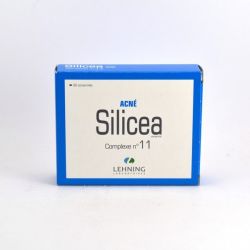 |
Lehning Silicea complex L 11 is used in the homeopathic treatment of certain skin conditions, in particular acne. |
100% natural anti-pimple treatment
Natural solution for cleansing the skin.
- Aleppo soap will gently rebalance your skin. Particularly gentle, Laino Liquid Aleppo Soap 500 ml is ideal for gently cleansing dry, fragile, atopic skin and skin prone to dermatological problems .
- To remove make-up without damaging the skin, choose a 100% pure, organic vegetable oil such as castor oil. The ricinoleic acid present in castor oil has a bactericidal action that prevents the proliferation of germs. Castor oil is therefore effective for certain skin disorders such as fungal infections, acne, dermatitis, etc. Mix castor oil with Tea Tree essential oil to dry out pimples.
- Dr Theiss’ colloidal silver, applied to blemishes with a cotton pad, relieves redness, lesions, cuts, burns and skin problems and helps damaged skin to repair itself.
- Floral waters such as Phytofrance Lavender Hydrosol are particularly suitable for treating blemish-prone or oily areas, as they help pimples to heal.
- Oatmeal and yoghurt scrub: Mix 2 tablespoons of oatmeal with half a natural organic yoghurt in a small clean bowl. Mix well. Apply to the face and massage gently using small circular movements. Rinse off with milk or toner.
- Green clay poultice: Green clay can be used as a mask for oily, acne-prone skin. It absorbs excess sebum and is antiseptic and healing.
- Microbiotic strains to rebuild the internal bacterial flora and soothe the stomach and skin. This rebalances the skin-gut axis.
For more information on the natural solution to teenage acne, ask your pharmacist for advice using our secure form.
Are you looking for a dermatologist near you?
To find a dermatologist efficiently in just a few clicks, use medecin-360.
Go to the site and carry out your search according to the department in which you are located. All you have to do is make your choice based on the results that appear and according to your needs. Then simply make an appointment by contacting the dermatologist. A map and directions to the dermatologist’s practice are even provided on this type of platform for putting doctors and patients in touch with each other.

